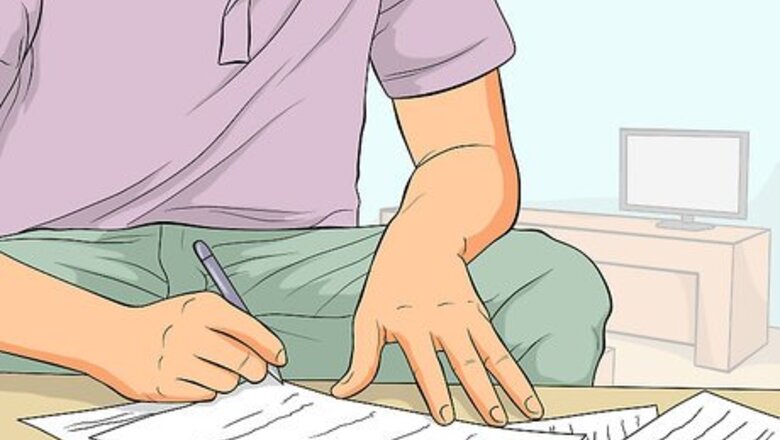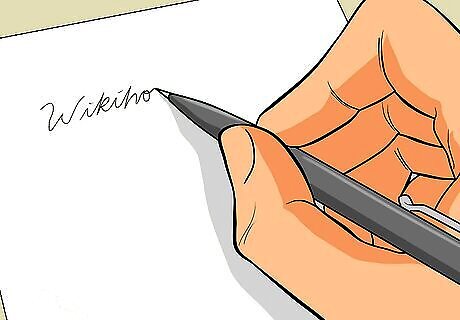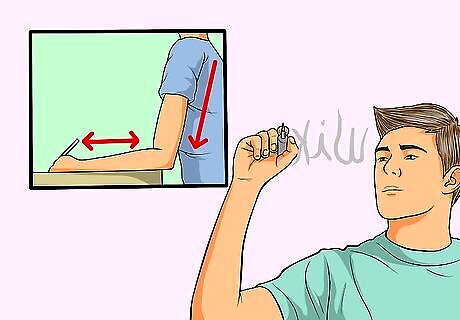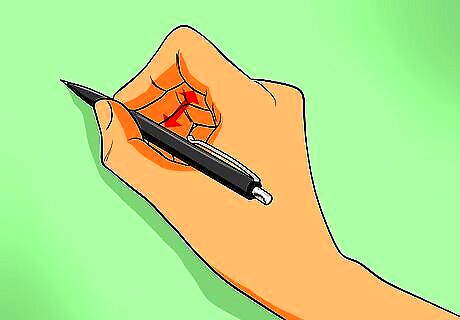
views
Getting Enough Practice

Practice every day. Daily practice will help you see results when you are working to improve your handwriting. You will want to examine your handwriting as you practice, evaluating your results and making any changes that you think are needed. Regular practice has been shown to be a great way to learn and maintain skills. Many worksheets are available on-line and have examples that you can practice with. Regular and consistent practice is critical to learning and mastering a new skill. Practice with both lined and blank paper.

Practice with lined paper. Before you begin to practice at keeping your sentences straight without lines, you will want to use lined paper to help guide your writing. These lines will help you practice keeping your writing straight, allowing you to have straighter writing when you write without them. Letters known as “descenders” should have their body sitting on the line while their stems dip below the line. The letters g,p,y,q, and j are all descenders. Letters that are classified as “ascenders” should have their body sitting on the line and their stems should extend upwards, about halfway to the line above. The letters b,d,h,t,l, and k are ascenders. All other letters should rest directly on the line.

Create some guide lines. If you have trouble writing straight without lines you can try adding some of your own guide lines to the blank sheet of paper. You will need a ruler or straight-edge and a pencil to draw your guide lines. These lines can help keep your writing straight and can be erased after you are done writing. Place your ruler straight across the page where you want to write a line. Lightly draw a guide line with your pencil. Remove the ruler. Use this guide line to keep your writing straight. After you are done writing, you can erase the guide line and leave your straightly formed writing.

Write slow while practicing. Taking your time when writing can help make handwriting look clean and sharp. Writing slowly can also help you to write straighter, as it gives you time to adjust the slant of your writing as you go. Always relax and take your time when writing to help you keep your sentences in a straight line. Rushing to write can cause your handwriting to slant or look untidy. As you write slowly, focus on keeping your sentences in straight lines. Slowing down can also help you learn better during practice sessions.
Using The Right Posture And Grip

Keep your arm and wrist in the same position. When you are writing, you will make use of many small movements in your fingers, wrist, hand, and arm. By focusing on using your entire arm and wrist, instead of just your fingers, you can help your writing to look clean and straight. Practice by making large letters, drawing them in the air with your hand. Avoid using your fingers to draw a letter. This can result in slanted handwriting and may cause your hand to cramp up. Use your entire arm and wrist to form your letters which will make your writing more fluid and straight.

Check your posture. Although it may seem like a small part of your handwriting practice, using the proper handwriting posture can help keep your handwriting straight. By sitting in the right way, your movements will shift and allow you greater control over your handwriting. Sit down with your feet flat on the floor and keep your back straight. Place your non-writing hand on the table to balance yourself. Don't practice writing while sitting on something soft like a couch or reclining chair.

Properly grip the pen or pencil. An important part of improving your handwriting, and keeping it straight, is gripping the pen or pencil properly. Holding your writing utensil incorrectly can cause you to lose control over it, resulting in sloppy or tilted sentences and letters. Always make sure you are holding the pen or pencil properly when you are practicing writing. Hold the pencil close to the tip, using your thumb and pointer finger to grip it. Let the pencil rest on your middle finger, near the last knuckle. Don't grip the pencil too tightly.




















Comments
0 comment